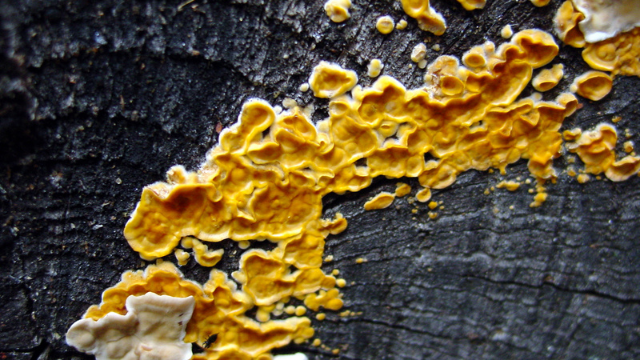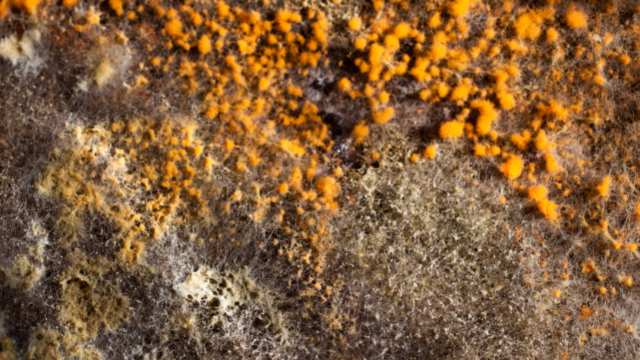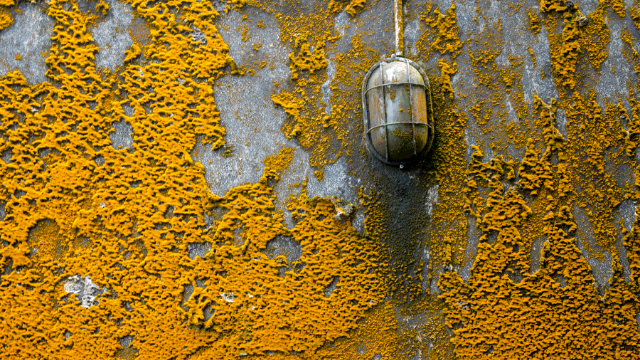There are many different types of mold and things relating to mold in our world. Mold spores on their own are microscopic and are abundant in nearly every room, with the average mold spore count being 500-700 spores in a room.
While mold spores are fairly common in a room, living with an abundance of mold spores or colonies can have adverse side effects on one’s health. While mold is fairly common, there are certain species less commonly known about, such as orange colonies of mold.
United Water Restoration Group would like to go over the potential illnesses related to mold and the specifics regarding orange mold.
Orange Mold Health Risks
Finding mold in your home or business may not necessarily make you or those on the property sick. Touching or inhaling mold can cause many different types of allergy-like symptoms, such as the following health risks:
- Eye irritation
- Sneezing
- Sore throat
- Headache
- Skin rash
- Lung irritation
- Runny nose
- Congestion
- Wheezing
Conditions such as asthma, cystic fibrosis, and a compromised immune system may add a higher risk of complications such as infection or severe allergic reactions. The larger the amount of mold, the more severe of a reaction one may experience.
These reactions may show up soon after exposure or can take time after prolonged exposure. If you begin experiencing any symptoms above, you should visit a doctor for treatment and a proper diagnosis.
What is Orange Mold?
Orange mold is a vibrant and sometimes alarming sight, often bringing up questions about what it is, where it comes from, and how it might affect your home. While the name suggests a single type, it’s a broader term covering several mold strains that sport an orange hue. Let’s dive into the vibrant world of orange mold.

Different Places Orange Mold Appears
- Orange Mold on Wood: Wood is an organic material, and that means it’s a prime target for mold growth. When moisture meets wood, especially in less ventilated areas, it creates a perfect breeding ground. So, don’t be too surprised if you stumble upon orange mold on a wooden surface, like a deck or an old piece of furniture.
- Orange Mold on a Wall: Walls, especially those in damper areas of your home like basements or bathrooms, can also show signs of orange mold. The mold spores might be attracted to the mineral content in the wall, leading to unwanted orange growth.
Surprising Varieties and Appearances
As we mentioned earlier, “orange mold” is a broad term. Here are some types of orange molds and their unique features:
- Slime Molds: These might sound like something out of a sci-fi movie, but they’re real and quite common. For example, Fuligo Septica is often called an orange mold, even though it’s typically yellow. It’s fascinating and weird, often resembling a slimy mass.
- Varied Colors: Acremonium starts off as a small moist mold, which can turn pink, gray, or even orange. The changes in its color and form can be intriguing, to say the least.
A Tiny Occupant: Cheese Mites
When we talk about mold, it’s not just the fungus itself. The environment it creates can attract other organisms. Enter the cheese mites. These tiny mites feed on organic materials and are commonly found munching on moldy cheese. While cheese is their favorite, they’re not picky and can find their way to any moldy surface, looking for a snack.
Areas Where Orange Mold Grows
Orange mold can grow in a variety of places. However, the most common area to spot this type of mold would be in your kitchen, specifically in your refrigerator. Orange mold is most commonly found on food items, such as dairy products and bread. It can grow outside of your fridge and spread to food on shelves or in containers.
If your refrigerator has the ability to serve water, the water supply can also become contaminated with mold. Always be sure to routinely check your fridge’s water filter to ensure your water supply is not contaminated.
When you recognize this type of mold on food, it is best to throw it out immediately as it can gradually spread throughout the fridge or your home. Orange mold’s primary food source is typically wood. Another common area to spot this type of mold would be in your attic. Due to the warmer temperature and ample supply of wood, an attic is a perfect spot for orange mold to grow and thrive.
Removing Orange Mold
How to treat orange mold, depends on where you have found the mold. There are multiple ways you can eliminate it. If the outbreak is smaller, you can use a concoction of bleach, hydrogen peroxide, or vinegar solutions.

For orange fungus on wood, do not use bleach to kill it. Bleach is not meant to be used on wood and most of the water will be absorbed into the wood. This gives the mold colony more opportunity to feed and spread throughout a room.
Getting Rid of Mold and Its Tiny Friends
No one wants mold or mold mites in their home. If you’re facing a minor mold problem, you can often scrub the affected area with a mixture of soap and water. Ensure the area is well-dried after cleaning since mold loves moisture.
However, if you’re looking to get rid of mold mites specifically, or if the mold infestation is extensive, it might be time to call in professionals like United Water Restoration. While cleaning up smaller mold outbreaks can be easy, the larger the outbreak, the more complex the job. The Environmental Protection Agency recommends that if you notice more than 10 feet of mold you should contact a professional.
How To Prevent Orange Mold From Forming in the First Place
Preventing orange mold from forming is the key to maintaining a healthy living environment. Here’s how you can do orange mold growth:
- Control Humidity: Keep the humidity levels in your home below 50%. Consider investing in a dehumidifier, especially for damp areas like basements, bathrooms, and attics.
- Ventilation is Key: Ensure proper ventilation throughout your home. Bathrooms and kitchens, in particular, should have exhaust fans to help expel moisture. Regularly open windows and doors to let fresh air circulate.
- Regular Inspections: Periodically inspect areas in your home prone to dampness, like basements, crawl spaces, and attics. Catching a mold problem early makes it easier to deal with.
- Fix Leaks Promptly: Leaky roofs, pipes, or faucets can lead to water accumulation. Regularly inspect your home for leaks and fix them as soon as possible.
- Avoid Carpets in Damp Areas: It’s best to avoid using carpets in areas prone to dampness, such as bathrooms or basements. If you must use carpets, ensure they are dry and clean them regularly.
- Dry Wet Areas Immediately: Whether it’s a spill on the carpet or a flood in the basement, ensure you dry wet areas within 24 to 48 hours. Mold can grow quickly in wet conditions.
- Direct Water Away from Home: Ensure that your home’s foundation has proper grading to direct water away. Cleaning and maintaining gutters and downspouts can also help in diverting rainwater.
- Store Items Properly: Avoid storing organic materials like wood or paper in damp areas. If you’re storing items in basements or garages, use plastic bins instead of cardboard boxes.
- Use Mold-Resistant Products: When building or renovating your home, consider using mold-resistant products like drywall or sheetrock. They can be particularly useful in areas prone to dampness.
- Clean Regularly: Regular cleaning can help reduce the chances of mold growth. Use mold-killing products in areas like the bathroom, and ensure you scrub the visible mold away as soon as you see it.
By following these tips, you’ll make your home less hospitable to orange mold and other types of molds. Remember, the key is to keep moisture levels under control and maintain cleanliness.
When To Get Help
A cluster of orange mold colonies can be troubling. As we listed above, there are certain ailments and illnesses that can arise from breathing in mold, especially in high amounts and for prolonged periods of time. This type of mold can grow in many various places, it loves to feed off of wood and can embed itself virtually anywhere.
If you notice a mold colony that spans more than several feet, it is highly recommended that you seek the assistance of professionals. However, if it is smaller, you may be able to take care of the problem yourself.
United Water Restoration Group can assist you in removing orange mold as well as preventing future outbreaks from occurring.
If you’ve spotted a large outbreak of orange mold, don’t hesitate to contact our emergency service line at (800) 430-5838. Our service line is open every day of the week and can place you in direct contact with one of our professional technicians. We offer flexible scheduling to help work around your schedule and needs.





